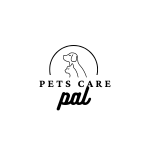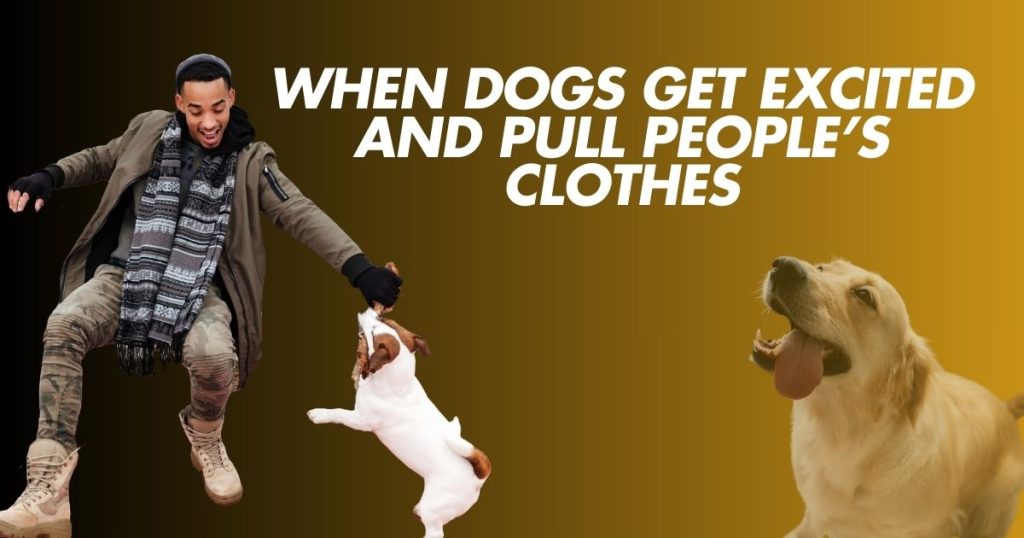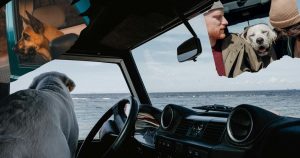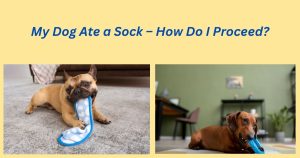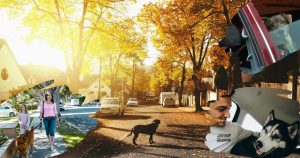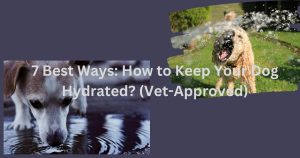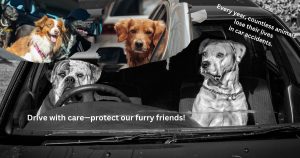In This Article
ToggleLast updated on January 18th, 2025 at 12:28 am
Ever come home after a long day to your dog excitedly tugging on your clothes? When dog gets excited he pulls people’s clothes to express his emotions, seek attention, or play. While it may seem cute at first, it can quickly become puzzling or frustrating.
This behaviour, rooted in their instincts and emotions, often occurs when you return home, encounter other dogs, or they feel overstimulated. Understanding these triggers helps manage the habit effectively. By addressing it, you’ll not only save your clothes but also strengthen your bond with your furry friend. Let’s explore the reasons and solutions for this behaviour.
Understanding when dog gets excited he pulls people’s clothes
Ever wondered why your dog tugs on your clothes? It might seem silly, but it’s actually a form of communication!
Dogs pull on clothes for a few reasons:
- Playtime: It’s their way of saying “Let’s play!”
- Attention: They want to get your attention and maybe a good scratch.
- Excitement: They’re overjoyed to see you!
Think of it like this: When you come home, your dog gets excited because they love spending time with you. It’s like a little party in their minds! And why do they grab your clothes? Well, your clothes smell like you! It’s comforting for them. Sometimes, if they’re feeling anxious, grabbing your clothes helps them feel safe and secure. Understanding why they do it is the first step. This helps you guide them towards better behaviours while keeping them happy and safe.
Specific Behaviors to Address
Does your dog love to tug on your clothes? It’s common, especially with puppies! Here’s why and what to do:
- Teething Trouble: Puppies explore the world with their mouths. Chewing on clothes is a natural part of this. Provide plenty of chew toys and gently redirect them to those instead.
- Boredom Biting: Adult dogs might bite clothes out of boredom. Make sure they get enough exercise and mental stimulation with walks, playtime, and puzzle toys.
- Walking Woes: If your dog bites your pants while walking, they might be acting out their herding instincts or just being playful. Use commands and toys to redirect their attention.
- Playful vs. Aggressive: It’s important to know the difference. Playful biting usually involves a wagging tail and relaxed body language. Aggressive biting might include growling or a stiff posture.
- Clothes Anxiety: Some dogs get stressed when you put clothes on them. Make sure the clothes fit well and use positive reinforcement to help them get used to it.
By understanding the reasons behind these behaviours, you can help your dog learn appropriate ways to interact with you and the world around them.
Managing and Reducing Excited Clothing-pulling
Does your dog get overly excited and start tugging on your clothes? It can be frustrating, but don’t worry, it’s common!
First, identify their triggers: What gets them really excited? Seeing other dogs? Meeting new people?
When they get overexcited, try these calming techniques:
- Find a quiet spot: Take a break from the excitement.
- Use soothing commands: Gently guide them to calm down.
Out in public, it can be trickier:
- Train for impulse control: Teach them commands like “sit” and “wait.”
- Redirect their energy: Offer them a toy or a treat to distract them.
Always reward good behaviour! When they behave well, give them lots of praise and treats.
Teach them “leave it” and “drop it”: These commands help them understand what’s okay and what’s not.
By understanding your dog’s triggers and using these simple techniques, you can help them manage their excitement and prevent them from pulling on your clothes.
Practical Solutions and Tools
Does your dog get a little too enthusiastic sometimes? Here are a few tips to help:
Gentle petting can help calm an excited dog, as it reassures them and diffuses their energy. If your dog behaves oddly, such as having a crush on their vet, acknowledge these quirks and use training to maintain control during such situations. For dogs that get in the way when you’re trying to leave for work, address potential separation anxiety by gradually teaching them to stay calm when left alone. Lastly, some dogs show their excitement in playful ways, like “taking pictures” with their behaviour. Understanding these actions helps strengthen your bond and ensure a happy, well-behaved pet.
FAQS
Why does my dog pull on my clothes when I come home?
Your dog may be pulling on your clothes as a way to show excitement and affection when you come home. They may also be trying to get your attention or play with you.
Is it normal for puppies to bite and tug at clothing?
Yes, it’s common for puppies to mouth and tug at clothes. They explore the world with their mouths, and this behaviour can be a form of play or teething. However, it’s important to redirect this behaviour to appropriate chew toys to prevent it from becoming a habit.
How can I stop my dog from pulling on my clothes?
To discourage this behaviour, avoid reacting when your dog tugs at your clothes, as reactions can reinforce the behaviour. Instead, stand still and look away to show that this behaviour doesn’t get attention. Teaching commands like “leave it” and “drop it” can also help manage and redirect their actions.
Can professional training help with this issue?
Yes, seeking guidance from a certified dog trainer can provide personalized strategies to address and modify this behaviour effectively.
Conclusion
Understanding when dog gets excited he pulls people’s clothes and identifying the triggers behind this behaviour is a key step toward building a better relationship with your furry companion. With consistent training, plenty of patience, and the right tools, you can effectively manage and even eliminate this behavior. Remember, there’s no shame in seeking professional guidance if the problem persists—sometimes an expert’s perspective can make all the difference.
By focusing on clear communication and using positive reinforcement, you’re not just addressing unwanted behaviours; you’re also strengthening the bond between you and your dog. A happy, well-behaved pet doesn’t just make life easier—it deepens the trust and connection you share, bringing joy to both your lives for years to come.
